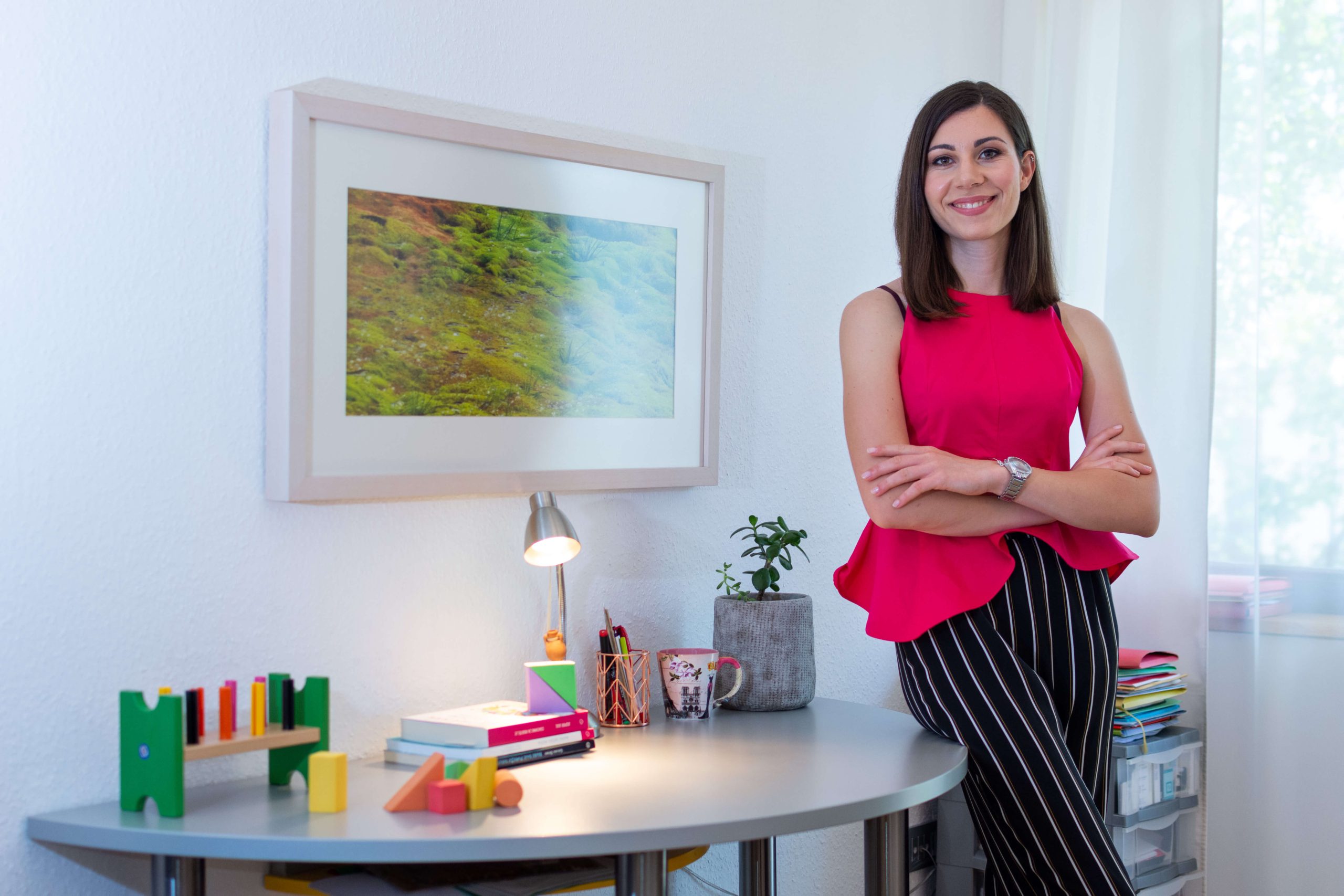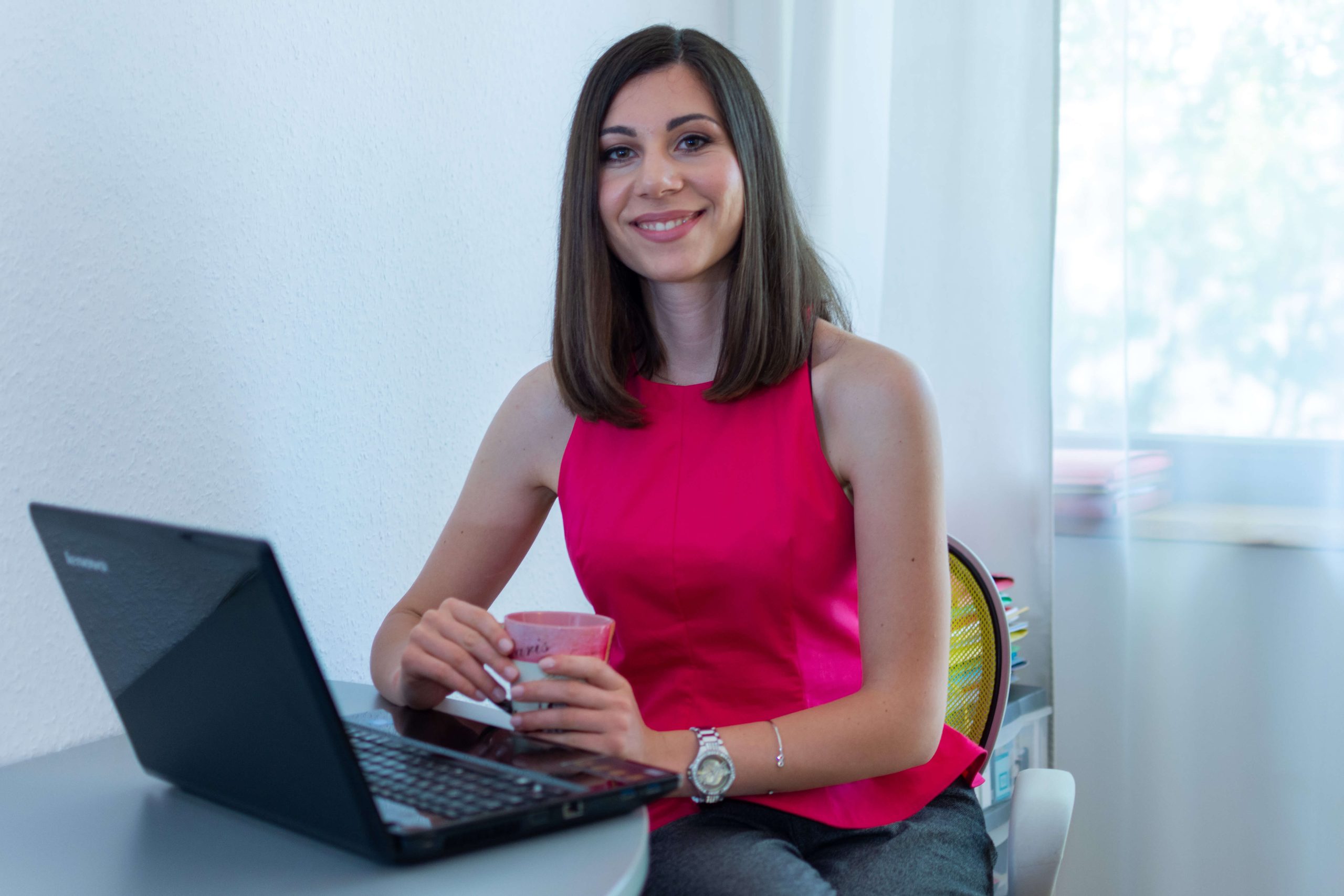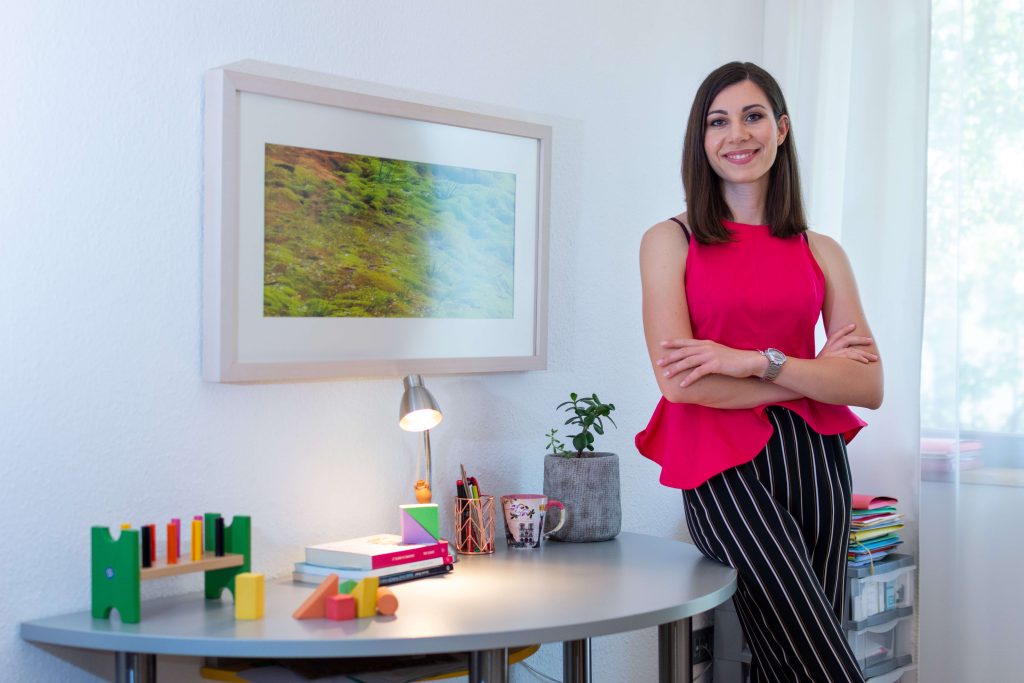
October 9, 2020 – For the past seven years, Glorija Peranic has worked with children, for children, and along with children. Now she is an educator for their upbringing and gives practical advice to hundreds of parents.
After graduating from her undergraduate studies for early and preschool education in Rijeka, Glorija enrolled in college in Zagreb and became a Master of Educational Rehabilitation. Through her studies, she volunteered at many places, worked with children with disabilities, as well as with children with regular development. “I worked with children, for children, and along with children,” said Glorija, who also got an internship in Milano.
As she always sought more, Glorija enrolled in the American programme called Positive Discipline and became the first certified Parent Educator in Croatia according to the positive discipline principles. Now she is working at Sinapsus as an educational rehabilitator and building her brand Edukatorica za odgoj (Educator for upbringing), at the same time. “I didn’t know this could be so successful,” said Glorija, “but I think this is the product of my seven years of work. She started her brand on Instagram and Facebook and gathered thousands of followers in just four months.
She is going live on Instagram, explaining some topics to parents, and afterwards, they can ask her whatever they want to. In addition, she also holds Q&A sessions. Her daily posts on social media are about how to solve various problems with children, how to amuse them, or simply how to get along with them. Real-life examples, which can be implemented immediately, are loved the most. “There is no point in me writing or explaining things in an expert language when the simple things are the ones that save parents in many situations,” said Glorija, whose light motive is “from a conflict to a relationship”. Besides, she organises educational workshops and individual consultations in real life, too.

© Paulino Girotto
Scream until you get it, aka tantrums
The most important thing is to determine the cause of the child’s behaviour, which brings us to tantrums. According to Glorija, there are two kinds of tantrums: one, when the child is really upset, but since they have minimal development capacities (verbal, seeing things from someone else’s perspective, empathy, regulation of current needs, regulation of emotion), that means the child doesn’t know how to regulate this emotional torrent, and then we need to connect with the child through structures in the brain. In that case, we have to address the child’s emotions because we address the brain’s structure in the limbic system, thus activating the prefrontal cortex, which is responsible for higher-order functions (learning, thinking, making the right decisions). This means that the child is upset, so it is important that the parent consistently, patiently, and compassionately calms the child, by verbalising the child’s emotions ‘I see that it is tough for you’, ‘I see that you are sad…’ and repeat this several times. “If you yell ‘Calm down, you know what will happen if you continue!’ in an angry tone, it means nothing because it goes to the part of the brain that is not active at that moment,” explained Glorija.
Parents have to connect with the child through emotions, and when the child sees that we have recognised their feelings, they will calm down, and the tantrum will stop. If parents can’t reach the child’s emotions just by verbalising, a firm hug is needed. Besides, another important thing is that the parent must stay calm and patient.
The second type of tantrum is when a child wants something, and they scream until they get it, and parents often call it manipulation. “But it’s not really manipulation,” said Glorija, “the child just performs according to their previous experience.” In that case, parents have to involve the child in some decision-making, but also divert their attention from their desire: ‘I see that you want it, now it isn’t possible, we only came to buy bread’, ‘Do you want us to go home this way or that way?’
Cartoons are to children what scrolling through Instagram is to adults
Cartoons are designed to hold the child’s focus, dopamine is secreted, the child enjoys them, and it is difficult for them to stop this activity – it’s similar to stopping scrolling through Instagram for adults. “When letting them view the screen, choose the content, arrange the duration, and agree with the rules in advance. ‘Do you want to watch one cartoon in the morning, one in the afternoon or both in the afternoon?’ so that the child participates in the decision,” said Glorija.
Terms like later or two o’clock mean nothing to children because they are abstract to them. Instead, use a sentence like ‘When the big hand on the clock gets here…’.
When their favourite cartoon is slowly coming to an end, it is important to announce that the end is near. Since it is difficult to turn off the TV, a parent should suggest to the child, ‘Now it’s over, will you press the red button or will I?’ and shift the focus to the next activity.
Copycats rather than listeners
At one seminar, Glorija told parents what to do, and in parallel, she was showing something else: 90% ignored what she said and copied her movements. “Everyone laughed, it was the ‘aha’ moment, and we came to a conclusion, children do what we do,” explained Glorija.
In addition, if parents want their child to do something, then they need to connect that activity with comfort. For example, if they want their child to read a book, they can organise a bookshelf, making it more visually interesting and approachable – so that the child can get a book without needing to ask someone.
Don’t plan a child’s day in a minute
School, kindergarten, sport, music school – every single activity has a strict schedule. If parents plan every single minute of their child’s day, they don’t leave any space for any free time. “Free time serves them to develop creativity, creation, imagination – it is time for independent, free play,” said Glorija. “The child starts to build a game, they don’t need toys that serve the game, but, for example, objects from nature, collecting leaves from which they can make a hedgehog house.”
Why make your child share his favourite toy when you don’t like sharing personal things with others?
“I know many disagree with my opinion, but I say that there is no need to force the child to share their candies or toys with other children, especially not their favourite toy,” said Glorija. There is a parallel game, where children play next to each other, but not with each other, and the cooperative game; children play together and try to reach the same goal, so they will likely exchange toys at some point. “This is where we can start with ourselves, we don’t like to share all our things either. But parents reach to this to try to impress other parents,” said Glorija.
Three crucial mistakes parents make
Parents often have the wrong perspective of things. For example, they are running late and don’t let their child tie their shoes by themselves, but tell them, ‘We don’t have time for this, I will do it’. After some time, the child doesn’t want to tie their shoes on their own but starts screaming until their parent does the job instead. Parents often call this problem manipulative, but actually, they don’t take responsibility for the consequences of their own actions.
The second mistake is inconsistency. “You can’t say to your child ‘no’ three times, then give up and say ‘yes’ the fourth time, and expect this won’t have any consequences,” said Glorija.
The third mistake is thinking that a parent is a parent; a child is a child, there has to be some order. “A lot of parents think their children aren’t equal to them, just because they are their parents. But the child is valid on their own, by their very existence, and not only when they’re being obedient,” said Glorija.
Some contradictions
“Parents want their child to do everything he demands, and when we ask parents what they would like from their children one day, it’s for them to be full of self-confidence and to be responsible,” says Glorija, “but that image is being built now.”
There is no need to set an ultimatum to the child; if they pass all their lectures with an A, a parent will buy them a bicycle. It is much more essential to develop intrinsic motivation to feel a personal responsibility for different activities. Emphasising effort, process, and responsibility makes more sense than paying attention only to the final product alone.
“Also, instead of saying ‘Bravo’ or ‘I’m proud’ or ‘I’m happy’, it’s better to say ‘You succeeded!’, ‘How do you feel?’, ‘Are you proud?’. We need to leave ourselves out of it; it’s the child’s effort. This way, we develop intrinsic motivation so that even if the child fails, they will try again,” said Glorija.
Every emotion is valid, but not every reaction is acceptable
In every game, there has to be both winners and losers. Parents should explain to the child that every emotion is valid, but not every reaction is acceptable; they need to develop a tolerance for frustration. “Children aren’t verbally mature enough to express their emotions, so parents need to stay calm and tell them ‘I understand why you are angry, I was angry when I lost, too…’. They also need to give them an alternative: ‘You can clench your fists or hug the pillow hard’, ‘You can go for a run and come back’. It is important to express emotions but in an acceptable way,” said Glorija, who notes that the tone is very important.
Glorija would like to make a positive change in society with this and that’s what she does, she reaches the parents of children who really need it. Besides her social media activity, she plans to create an e-book and online education.
“I would like to emphasise to every parent that every child wants to cooperate with their parents,” said Glorija. “It is up to us adults, who have a broader perspective, cognitive and verbal and emotional development at a higher level, to adapt the approach to open channels of cooperation.”
You can follow Glorija on her Facebook and Instagram profile (Edukatorica za odgoj).
For the latest travel info, bookmark our main travel info article, which is updated daily.
Read the Croatian Travel Update in your language – now available in 24 languages.
Join the Total Croatia Travel INFO Viber community.










